Trial Biking – Overview
Trial biking is an extreme sport and is a discipline of mountain biking where the players ride on a trial bike and race on a course which is filled with obstacles. The player is not allowed to set the foot or hand on the ground during the race. As compared to mountain biking, trial biking players need better bike riding skills as the trails are filled with more complex obstacles.
In trial biking, players ride on a trail filled with obstacles like rocks, logs, pallets, spools etc. and try to negotiate each part without setting his/her foot or hands on the ground. Players are awarded points in case of setting feet or hands on the ground. At the end of the race, the player with least score is declared as the winner.
A Brief History of Trial Biking
Trial biking was originated in Catalonia, Spain. Initially, Eddy Kessler, a motorcycle trial champion, recognized the possibilities of bicycle trial and tried to develop the game by organizing main events including U.S. Bicycle National in 1980 and 1981. In 1981, he published a 12-page book on Mountain biking trials.
In 1980, Pedro Pi, a Spanish rider, designed a 20×20 Montesa trial bicycle which evolved into Monty. His son Ot Pi won several world championship events and became the worldwide leading Bicycle trials ambassador. In 1987, Ot Pi went to US and started giving demonstrations about bike trials in schools in order to spread the popularity of the game.
Slowly the popularity of the game started increasing rapidly and more number of players started taking part in the game. Many manufacturers started working on different bike designs including the 26×26, 26×24 and 26×20 designs before producing the Ibis Mountain Trial, a multi- speed 26×24 model.
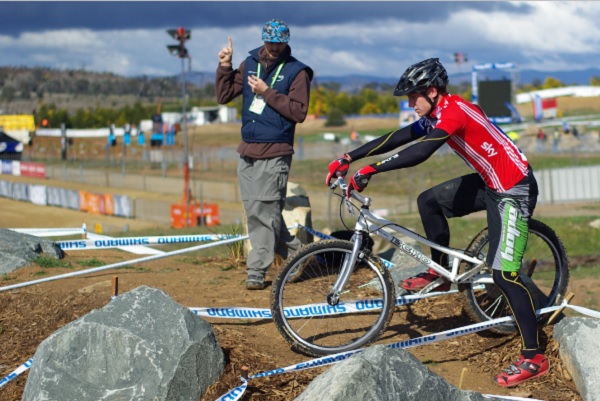
Participating Countries
The extreme bike riding skills and the eye grabbing stunts make trial biking popular among the extreme sport lovers. Though primarily a European sport, the game slowly gained wide popularity in other territories including USA and United Kingdom.
Some of the countries where trial biking is quite popular are France, Great Britain, Spain, Sweden, Canada, Switzerland, Germany, Italy, Czech Republic, and Hungary.
Trial Biking – Equipment
The equipment used in trial biking are very much similar to that of mountain biking. The bikes used in trial biking are little bit different than that of mountain biking as in case of trial biking, better bike control is needed. In this chapter, we will have a brief description about the equipment used in Trial Biking.
Riding Equipment
Bike

A specially designed bike is used in trial biking for riding on the trails. As better bike control is required, the bikes must have powerful brakes, wider handlebars, lightweight parts, low tire pressure with a thicker rear tire and have no seats.
During the competition, the rider hardly needs to sit down. The lighter the frames are, the less it interferes with the body movements of the player. So the height of the frame stays as low as possible.
In general, the BB spindles are positioned much higher than the line between the axles in case of trial biking frames that are meant for competition.
Presently, in competitions, two classes of trial bikes are used −
- Mod bikes − These are 20” wheeled bikes. They are developed by a company named Montesa and are mainly based on modified BMX bikes. Some mod bikes have even 19” rear wheel in order to provide room for bigger tires.
- Stock bikes − These are 26” wheeled bikes. These are kept in stock and are not modified bikes like mod bikes. The present 26” stock bikes look very much similar to that of 20” mod bikes.
Besides mod bikes and stock bikes, 24” bikes are also used which are not allowed in competitions and are only used in street trial biking.
Trial Bike Frames
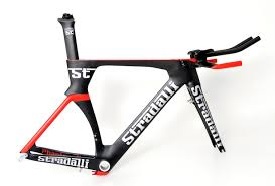
Trial bike frames often have holes in front of the head tube and also in the BB shell, seat tube and the drop outs in order to reduce the weight of the frame.
The disk brake mounted on trial frames are heavily reinforced high brake force is often required especially forcing the rear brake to act backward.
Brakes
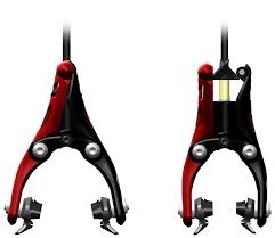
The brakes in the trial bike are made in such a way that it provides more stopping torque especially, on the rear. Instead of locking the wheels, the brake system tries to bring down the bike to a smooth halt from speed. For larger wheeled bikes, hydraulic brakes are applied which act directly on the wheels.
To make the brake lock on the rim as firmly as possible, the braking surface of the rim is roughened using an angle grinder. The rim grinding can vary from slightly roughened to harshly roughened. Depending on the weather condition and the brake pad compounds chosen, different levels of grinds are provided on the rim for better brake performance.
Rim Tar

Another effective way of increasing the braking power is applying road tar on the braking surface which makes the brake pads stick to the surface resulting in better braking performance and excellent pad durability.
Rim brakes can also be enhanced by using brake boosters where horse shoe shaped plates are bolted between the brake pistons which increases the force needed to push the brakes apart.
Wheels

The trial bike rims are wider than mountain bike rims so tires with wider contact patch are used.
In order to increase the resistance of the tires against pinch puncturing, thicker walled tires are used especially on the rear wheel.
The hubs used in trial bikes are very much similar to cross-country bikes and have more cut-outs to save more weight.
All trial bikes that are used for competition have one gear. The gear ratio plays a vital role in deciding the distance the wheels are going to cover through each turn of pedals.
Some of the famous gear ratios are as follows −
- 18:15: The bike rolls 2.49 m or 98” for one complete pedal turn for a 26” bike.
- 18:14: The bike rolls 2.46 m or 97” for one complete pedal turn for a 24” bike.
- 18:12: The bike rolls 2.39 m or 94” for one complete pedal turn for a 20” bike.
The chosen gear ratio provides power and quick acceleration to the bike to move the bike at a low speed.
Protective Equipment
As an extreme sport, Trial Biking involves high speed and a lot of dangerous stunts. Accidents and injuries are pretty common in trial biking. In order to prevent these injuries, players use different protective gears and equipment. Let us now have a brief description about these equipment.
Helmets
Players use helmets as a protective measure for head. Usually two types of helmets are used in trial biking which are rounded skateboarder style and full-faced style. Rounded skateboard helmets are cheaper and simpler and can cover a large area of the head. Full-faced style helmets have an extra jaw guard placed in it.
Body armours and pads
In order to prevent crashes and accidents, players use body armours and different pads which include hard plastic shells for limb protection and metal enforced plastic plates for spine.
Some players also use chest and abdomen protectors. Players even use elbow pads, shin guards as well as ankle guards for better protection.

Specially made gloves are used by trial biking players for better protection. Extra padding near the hand knuckles are provided with thumb and fingers mostly covered with heavier construction.
Trial Biking – How to Play?
There is no bike racing in trial biking. Players instead try to overcome all the sections with perfection in order to avoid points. The rules vary according to different governing bodies. But the general rule is to ride on the course with pre-marked sections. In order to win the competition, the rider has to reach the destination within a pre-defined time period. The player having the least points is the winner.
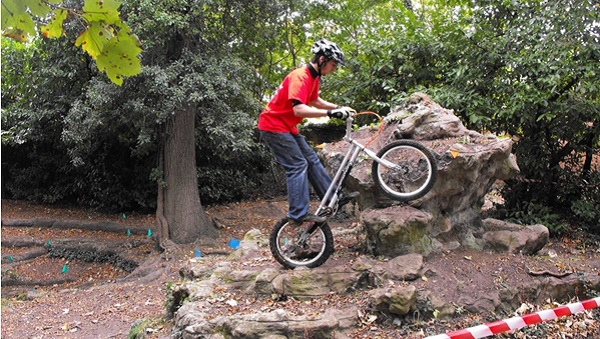
The number of pre-marked sections on a trail usually consists of two laps. Each lap has ten sections. If there are three laps, then each lap has seven sections. Usually the difficulty level in those sections increases at a natural progression starting from easier ones to more challenging ones.
Players are provided points on putting down a foot or hand on the ground which is also known as dab. In each section, a player can earn maximum five points and minimum zero points considered as clean.
A game time limit and a section time limit is decided before the starting of the race. The section time limit being constant for all sections. The recommended time limit for a section is 180 seconds. The time starts when the front axle of player’s bike passes through the start gate and it ends when the front axle crosses the exit gate. The checkers usually inform the players in case of 1 min, 15 or 30 second left.
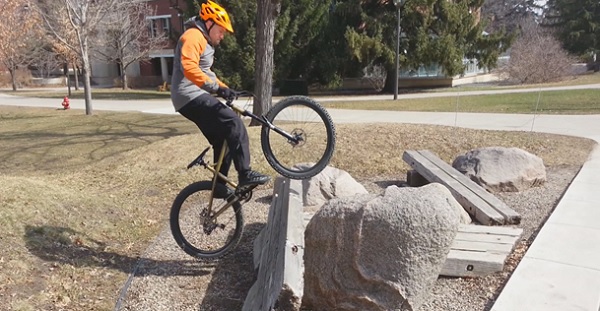
If there is a tie for the top position in an event, different tie breaker rules are applied in order to decide the winner. Some of them are −
- A rider with maximum cleans can be the winner.
- In case of no cleans, the rider with most ones or twos can be declared winner.
- The rider winning a run-off or winning an unused section by rerunning it.
Sometimes checkers, who are delegated to check the player actions during the game, may help in deciding the winner.
Trial Biking – Techniques
In order to overcome all the obstacles, players need to master a lot of techniques. The player should know all about good bike riding and should have controlling ability. Some of the bike riding techniques are as follows −
Back Hop
One of the basic techniques in trial biking is back hop. It is mostly performed to get a backward jump while the player is still on the bike after a failed attempt at an obstacle. It is performed by players to back off and regain control after a failed attempt of gaining control over an obstacle.
The players first lift the handlebars while giving a back force on the pedals to lift the front wheel and once the handlebars are lifted, they try to control the balance by kicking and hopping on the pedals.
Bunny Hop
Bunny hop is a very essential technique for clearing obstacles and climbing rocks and walls. To perform this technique, the players first bring their chest near the handlebars while bending down their knees. Then they need to lift the handlebars in backward position to lift the front wheel to the maximum level while standing on the pedals and pulling the handlebars towards their laps.
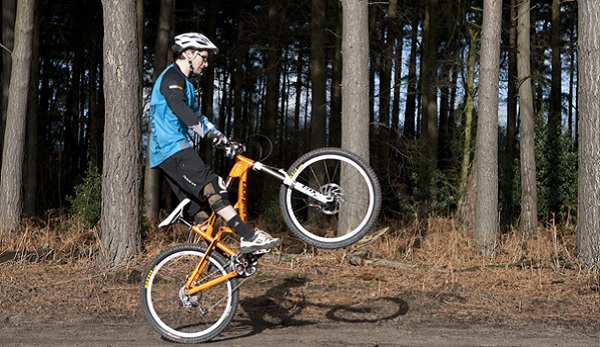
Once the front wheel is off the ground, the next part is to get the back wheel off the ground for which the players have to scoop their legs upward while pointing their back foot. Once both wheels are off the ground, the player need to push down the handlebar while getting their hip part behind the bike for a perfect landing.
Pedal kicks
The pedal kick or pedal hop is considered as one of the most versatile and complex techniques in trial biking. It is mostly performed in order to jump off a small distance. For this technique, the pedals should be brought to horizontal position first.
Then the player has to raise the front wheels by pulling the handlebars in backward direction and then suddenly try to give a pedal kick while moving his hips back and forth and standing on the rear wheel. For the next jump after the landing, the pedals should again have to be brought back to the initial horizontal position.
Side hops
Side hops are mostly performed in case of mounting on an obstacle that is placed in the sideways. Initially, the player has to compress his body on the bike and then pulling the handle bar to lift the front wheel while kicking the pedals forward which will make the bike jump high leaping in the air.
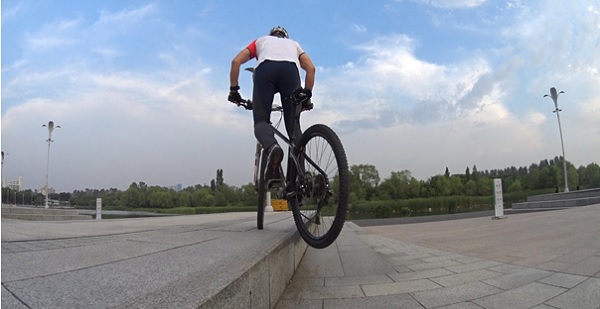
While being airborne, the player needs to lean towards the obstacles focusing mostly to place the front wheel at the target position. He/she needs to push the front wheel forward on to the target surface which will make the rear wheel coax up to the same height level as that of front wheel and land safely on the obstacle.
Trial Biking – Rules
In case of a trial biking competitions, some basic rules have to be followed regarding the game and the trail. Any bike that is determined to be dangerous by the event directors won’t be allowed in the event. A bike can be repaired or replaced during the game but it has to be replaced with a bike of the same class.

A section should not be of dangerous form. During the race, no one except the rider and the checkers are allowed in the section. The player has to follow the proper gate rules, i.e., entering and exiting the proper gate failing which a gate foul will be enforced on the player.
The maximum obstacle jumps should be between 0.8 m to 1.m depending on categories. Ribbons that are used in the game should be between 4” to 18” from the ground. The ribbons marking system on the left side should be blue in color while the right side ribbon markings should be red colored.
Street trials
Similar to street skateboarding, street trials are developed as a free style version of trial biking. With more fluidity as compared to trial biking, street trial also has same tricks and techniques while jumping and balancing on narrow obstacles. Here players are not restricted with trail rules and mostly perform on street obstacles in urban areas.
Dabs
There are certain rules to enforce penalty points during a section. Based on different player actions, different penalty points are enforced on the player. If a player has passed the prescribed time limit, he will get 5 points. Similarly, while touching the ground with a foot or hand earns him one penalty point. A player gets the following number of points for each dab −
- For first dab one point
- For second dab two points
- For third dab three points
- For fourth dab three points
- For five or more dabs five points
As a player can get maximum five dabs in a section, making more than five dabs in a section still earns him five points. If a player makes two dabs simultaneously he gets five points. These dabs are as follows −
- Foot and foot
- Foot and hand
- Foot and shoulder
- Knee and hand
- Hand and hand
There are some major mistakes for which a player may get big penalty points −
- In case of breaking down the ribbon or marker lines, the player earns five points.
- Dabbing outside the section earns him one point.
- In case of sliding one foot on the ground, the player earns three points.
- Players can’t rest on pedals continuously for more than 3 seconds, failing which earns him five points.
- Making two dabs at the same side of the cycle earns him five points.
- In case of modifying the section, the player gets ten points.
- Pre-riding on the course before the competition even started may earn him 100 points that means a sure-shot loss.
- In case of a gate foul, the player earns five points.
At the end of the game, all points from different sections as well as actions are added for the final score.
There are some general rules that are same for all trial biking events. But different rules are also applied based on different organizations and events. Mostly there are two main organizations to make specific competition rules in their regulated matches which are UCI and BIU.
UCI Rules
Based on UCI rules, if any part of the player’s cycle except the tires touches any object during the race, dabs will be given to the player. These rules were changed in order to avoid the extra runoff session after a tie. UCI rules allow riders to compete in both mod as well as stock categories.
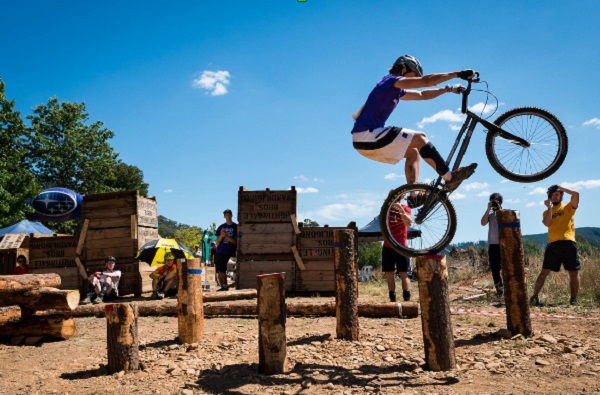
During the race, neither of the tires are allowed to cross the side boundary tape even though the wheels are on air. Before a section begins, a player is allowed to walk through it in order to examine the lines and obstacles but entering the section with bike is not allowed.
BIU Rules
As per BIU rules, parts of a bike including bash guard or bash ring, cranks and pedals can rest on objects during the competition without resulting in a dab. Here the level of riding for elite 20” class bike is considered as highest in bicycle racing.
Trial Biking – Champions
Trial biking is mostly governed by two large organizations worldwide which are Union Cycliste Internationale (UCI) and Bike Trial International Union(BIU). These two organizations organize worldwide trial biking events and are responsible for different rule changes in the game. While UCI oversees different cycling events worldwide, BIU is responsible for worldwide trial biking events.
UCI and BIU organize different trial biking championship events worldwide. They are −
- UCI Trials World Cup
- Czech National Trial Championships
- World Bike Trial Championship
- British Bike Trial Championship
- European Championship
Let us now have a brief introduction to some of the champions of trial biking and their careers −
Jeroni Fajardo

Jeroni Fajardo is a trial biker from Spain who was the champion of 2002 FIM European Trials. Fajardo started his career through FIM European Trials in 2002 and won it. In the same year, he also participated in FIM Trial World Championship. In 2004, he became the member of TDN Team that won the world cup.
In 2009, he won a World Cup and was also a runner-up in Spanish Trials. In 2012, he came third in the World Championship. From 2006 to 2015 he was the member of Spanish TDN team who are winners for the past ten years.
Adam Raga
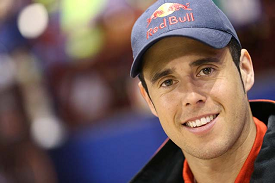
Adam Raga is a trial biker from Spain who has won four indoor and two outdoor championships. In 1999, he participated in European Championship and earned second place. In 2000, he won Junior World Championship and European Championship. In 2001, he became the National World Champion.
From 2003 to 2006, he participated in Trial Indoor and Trial Outdoor World Championships. He won the Trial Indoor World Championship from 2003 to 2006 but in case of Trial Outdoor World Championship, he earned fourth place in 2003 and third place in 2004. In 2005 and 2006, he won the championship. In 2007, he earned second place in both the championships.
Antoni Bou
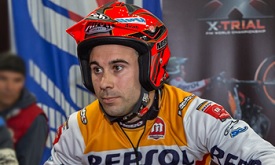
Antoni Bou, also known as Toni Bou, is a trial biker from Spain who has won FIM Outdoor Trial World Championship from 2007 to 2015. From 2007 to 2016, he is the winner of FIM Indoor Trial World Championship. Bou won his first race in 1999 when he participated in Catalan Cadet Trial Championship.
In 2001, he was the winner of Spanish Junior Trial Championship. He started participating in international competitions from 2003 and won European Outdoor Trials. In 2006, he got the third place in World Trial Indoor Championship which was his first win in World Trials.
Albert Cabestany

Albert Cabestany is a trial biker from Spain who has become Spanish Outdoor Trials Champion in 2002 and Indoor Champion in 2002, 2003, and 2006. He made his debut in international competitions in 1997 when he participated in FIM Trial European Championship and earned eighth place.
In 1998, he took part in the same competition and earned second place. In the same season, he took part in FIM Trial World Championship and earned 14th place. In 2002, he won the Spanish Championship Title by defeating Adam Raga.
Dougie Lampkin

Dougie Lampkin is an English trial biker who won World Indoor Championship from 1997 to 2001 and World Outdoor Championships from 1997 to 2003. Along with this, he also won World Team Championships in 1997, 1999, 2002, and 2003.
His other wins include two Spanish Adult Championships, six British Adult Championships, and four Scott Trial Championships. Lampkin started his career in 1991 and won Schoolboy B Class British Championship. In 1992, he won British A Class Championship. In 1993, he won European Championship.
Donna Fox
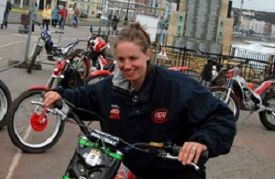
Donna Fox is a trial biker from Great Britain who started her international career in 2002. She took part in FIM Women’s World Trials Championship. She also became a member of FIM Trial Des Nations in 2002. She won her first medal in 2006 as a member of British TDN team.
In 2009, she took part in British and World Championship and was the runner-up. In 2011, 2012, 2013, and 2015, she earned third place in both the championships. Along with this, she, with her team mates Emma Bristow and Rebekah Cook, won FIM Women’s World Championship where she got the third place and other two got first and second place.
Rebekah Cook
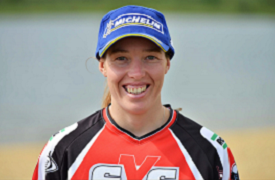
Rebekah Cook is a trial biker from England who won British Women’s Trials Championship nine times. Along with this, she also won European Women’s Trials Championship in 2012. She started her career in 2004 and won British Women’s Trials Championship.
She won this championship till 2009. In 2010, she was defeated by Joanne Coles. She again won this competition in 2011, 2012, and 2013 but was defeated in 2014.
Along with this she participated in European Women’s Trials Championship and got third rank in 2005, 2007, 2008, 2010, and 2011, second rank in 2009 and first rank in 2012.
Emma Bristow
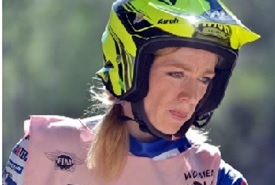
Emma Bristow is a trial biker from England who won Women’s FIM Trial World Championship and British Women’s title in 2014. Along with this, she also won Women’s FIM Trials European Championship in 2013. She started her career in 2006 by participating in World Championships and earned ninth rank.
In 2011 and 2012, she was the runner-up in World Championships. In 2013, she won Women’s FIM Trials European Championship. In 2014, she was the winner of Women’s FIM Trial World Championship and British Women’s Title.
Laia Sanz
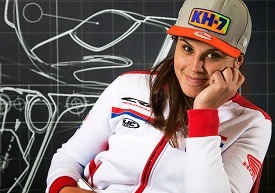
Laia Sanz is a trial biker from Spain who has won Women’s Trial World Championship 13 times and Women Trials European Championship ten times. She was also the member of Spanish Female team and helped them to win various events. In 2011, she participated in Dakar Rally and won in the women’s category.
Her overall rank was 39 in the event. She started her international career in 1998 by taking part in female trial competition. In the same year, she also took part in Women’s Trials European Championship and won it though it was unofficial.
In 2000, she won the Spanish Cadet Championship in which she was the only female rider. In the same year, she participated in Women’s Trial World and European Championships. She won the world championship and got second rank in the European championship. From 2000 to 2006, she was the winner of Women’s Trial World Championship.
Iris Kramer
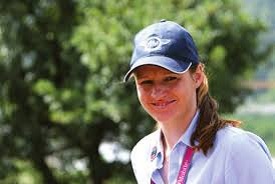
Iris Kramer is a trial biker from Germany who won German Women’s Trials Championship six times, Women’s FIM Trials European Championship three times, and one-time winner of Women’s FIM Trial World Championship. She started her career in 2002 by participating and winning German Women’s Trials Championship.
She won this championship consecutively for six years. In 1999, 2000, and 2001, she was the winner of FIM European Championships. She was a runner-up of FIM Trial World Championship from 2000 to 2006 but won the competition in 2007.
